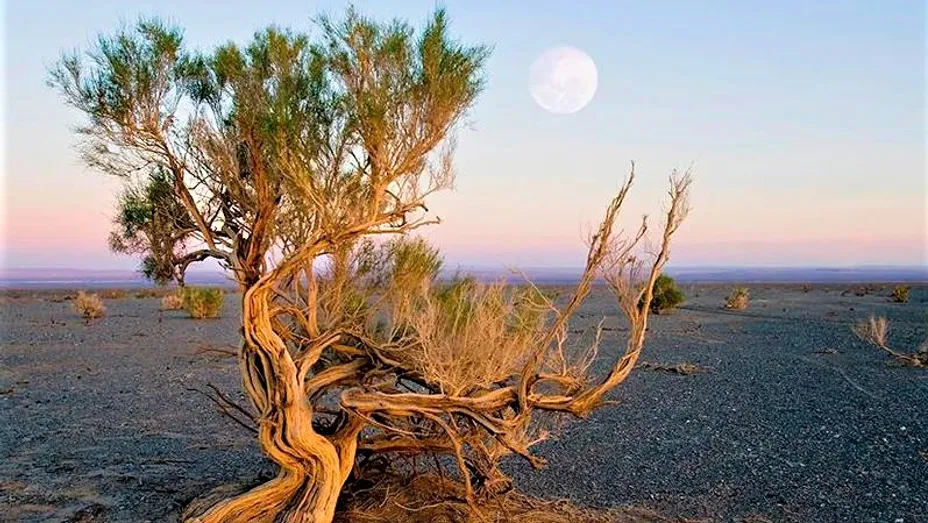The arrival of spring kicked off the planting of saxaul on the dried bottom of the Aral Sea in the Kyzylorda region. It is planned to more than double the area of reforestation by planting 250 thousand hectares this year and about a million in the next three years.
Million-hectare saxaul forest
The decision was made last year after a delegation of the Kazakh Ministry of Ecology, Geology and Natural Resources visited Uzbekistan to study their experience in combating desertification of the Aral Sea. Uzbekistan’s recent accomplishment includes successfully planting and growing saxaul on the bottom of the Aral Sea. The Uzbek efforts resulted in trees taking roots over 1.2 million hectares of the sandy territory.
According to experts, tens of millions of tons of salt and dust are blown by the wind from the bottom of the sea every year. They are carried for thousands of kilometers across the land. The saxaul plant is low-maintenance and can survive in the harsh conditions of the desert. One tree can block about 4 tons of sand, which makes it a safe bet for protecting the environment.
Challenges
Ardak Kadir, director of the Kazaly State Forest and Wildlife Protection Department, asked for additional assistance in planting saxaul on the bottom of the Aral Sea.
"The faster we work, the better the ecology will be. We are here every day since dawn. The work is complicated by windy weather, which raises the sand," said Ardak Kadir.
The Aral and Kazaly district forestry officials are now doing the work. In the fall, forestry specialists from all over the region will be involved in the planting. However, the current state of their technical base leaves much to be desired. In the next three years, they want to strengthen it by 70-80 percent, the head of the regional Department of Natural Resources and Regulation of Nature Management Baurzhan Shamenov shared his plans.
"Currently, the material and technical base of forestry institutions is insufficiently equipped. In this direction, we are considering the purchase of HTZ tractors, vehicles for the transportation of seedlings, patrol cars, as well as units for sowing saxaul."
"We grow seedlings in temporary nurseries of forestry institutions and then already transfer them to the dried seabed," explained Aibek Jolakhanov, head of the department of the regional territorial inspection of forestry and wildlife.
The greening of the dried-up Aral Sea bottom began 20 years ago. During these years by different methods, it was possible to plant saxaul on an area of more than 200 thousand hectares. Thanks to the natural process, this area has increased to 400 thousand.










